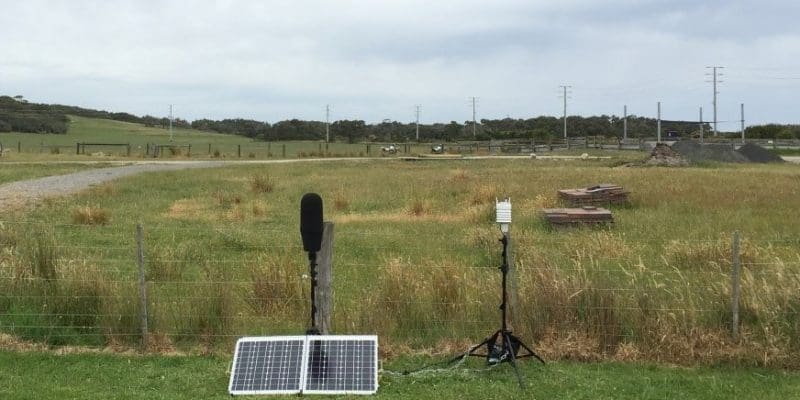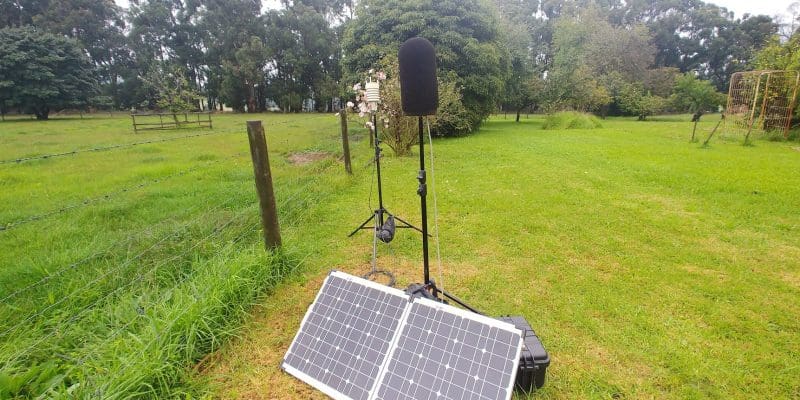A Background Noise Monitoring Report and Environmental Noise Assessment were completed by Marshall Day Acoustics. The MDA assessments were subject to peer reviews by Sonus and Environmental Audit by an EPA Appointed Environmental Auditor, in accordance with the requirements Clause 52.32-4 of the Planning Scheme.
The process for the noise assessment is:
Different turbines generate different noise outputs and the turbines to be installed at the Delburn Wind Farm will be selected via a tender process prior to construction. Three different turbine models that may be selected for the project were used to complete the Noise Impact Assessment:
Provision has been made in the modelling to measure uncertainties in manufacturer noise specifications, to ensure the modelling provides a conservative assessment of ‘worst-case’ noise emissions.

The relevant legislation and government policies required to be considered in the Assessment include:
Background noise monitoring was undertaken at nine ‘receivers’ or dwellings identified as being in the vicinity of the wind farm between 6 March 2020 and 18 June 2020 to determine the existing conditions relevant to the site. The results of this monitoring, which varies with wind speed was then used in the noise impact assessment.

All noise levels are expressed as decibels (dB), which is the standard unit used to describe sound levels. The New Zealand (NZ) Standard, which is required to be used in Victoria requires the noise level from a wind turbine at a noise sensitive location to be no more than 5dB above the background noise level or 40dB, whichever is greater. Compliance with the NZ Standard does not mean that the wind farm will never be heard at all locations.
The NZ Standard also requires lower limits in areas of ‘high amenity’ during evening and night-time periods of no more than 5dB above background or 35dB, whichever is greater. High amenity noise limits are not applicable during the daytime period.
Wind turbine sound levels with special audible characteristics, such as tonality, impulsiveness and amplitude modulation are addressed in the Standard by requiring them to be adjusted by arithmetically adding up to +6dB to the measured level at the noise sensitive location.

The background noise assessment is used to determine the applicable noise criteria at different wind speeds, being 40dB (or 35dB for High Amenity) or background LA90 plus 5dB, whichever is greater. The assessment concluded that the High Amenity limit under the NZ Standard does not apply to any of the dwellings surrounding the wind farm site.
The noise modelling results demonstrate that the proposed wind turbines are predicted to comply with the operational noise requirements of the NZ Standard, as required by the Victorian Wind Energy Guidelines.
The peer review concludes that the Marshall Day assessment had been conducted in accordance with the Wind Energy Guidelines and the assessed layout will achieve the objective requirements of the wind farm project.

An environmental audit has been completed in accordance with Section 53V of the Environment Protection Act 1970 of the assessment undertaken by Marshall Day of the wind farm.
The auditor agreed with the approach taken and the conclusions drawn in the noise assessment and included two recommendations for additional assessment works relating to tonality of selected turbines and post construction noise monitoring, consistent with the recommendations of Marshall Day Acoustics.
Construction of a wind farm will generate noise and vibration from activities on and off the site. Off-site noise generating activities primarily relate to heavy goods vehicle movements to and from the site. On-site works include a range of activities such as construction of access tracks, connection infrastructure, turbine foundations and erection of the turbines.
The construction activity that typically occurs nearest to receivers is access road construction. This activity involves a short period of elevated noise while work is carried out to improve existing roads in some locations, create new intersections at site access points, and construct site access tracks. During the initial works, construction noise levels of the order of 70 to 75 dB could be expected for brief periods when road and access work is carried out.
During minor public road upgrade works for the wind farm, three receivers along Golden Gully Road will be located less than 500 metres from these types of construction activities. These noise levels will be comparable to, and typical of noise levels produced by general road maintenance works and activity.
Once the initial work for road access is complete, the majority of the work occurs in proximity to the turbine locations, related infrastructure and on-site cabling routes and therefore there will be typically greater separation distances to receivers. However, depending on noise levels and wind directions, construction noise has the potential to be audible at surrounding receivers from time to time. To mitigate this, the majority of work should be restricted to normal working hours.
There are some occasions when work will be required outside normal business hours such as the delivery of oversized turbine components which need to occur at times to minimise traffic disruption associated with intersection closures, and potential turbine installation activities that are sensitive to weather conditions such as installation of rotors.
Controls around construction activities will be documented and agreed in a Construction Environmental Management Plan (CEMP) which is included as part of the Planning Permit conditions.
On the basis of the operation and implementation of a CEMP, the noise assessment concludes that it is expected that construction noise associated with the wind farm can be acceptably managed.

An updated assessment of the wind farm’s compliance with the New Zealand Standard will be completed for the final turbine layout and selected turbine prior to commencing construction.
A Noise Management Plan will also be prepared which identifies how compliance with the wind farms’ operational noise limits will be demonstrated, including details of testing procedures and reporting time frames following the commencement of operation for the wind farm.
Consideration will be given to conducting indicative on-site noise emission testing for a sample of the first turbines to start generating power at the site to determine whether the turbines’ noise emissions are consistent with expectations.
Stay informed on the latest project updates and Community Benefits opportunities by subscribing to our e-Newsletter.

The Delburn Wind Farm is a joint venture project between OSMI Australia and Cubico Sustainable Investments.
Delburn Wind Farm acknowledges the Traditional Owners and ongoing Custodians of the lands in which we operate. We pay our respects to Elders past, present and emerging.

The Delburn Wind Farm is a joint venture project between OSMI Australia and Cubico Sustainable Investments.
Delburn Wind Farm acknowledges the Traditional Owners and ongoing Custodians of the lands in which we operate. We pay our respects to Elders past, present and emerging.